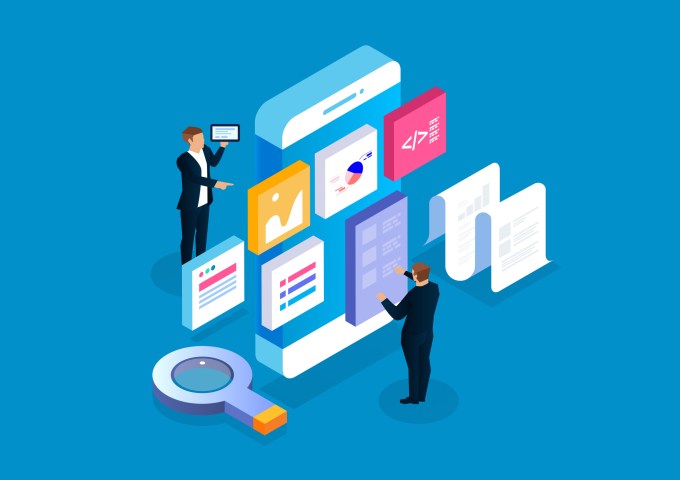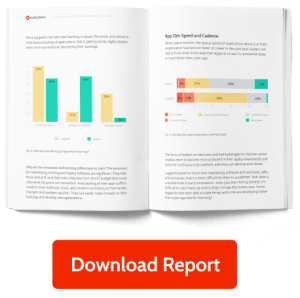Every year, we survey thousands of developers around the world to understand the state of software development. The result of that survey in 2020 is captured in our new report, “The Speed of Change: How Fast Are You?” You can see the full report right now. But, this got me thinking about how we have become so used to hearing “agile” and “agility” that we don’t really stop and think about what it means.
Apart from the application development methodology, most of us equate “agility” with being flexible, adaptable, able to pivot in a lively manner; none of which show up on Thesaurus.com by the way.
In our recent 2020 State of Application Development Survey, we wanted to measure organizations’ agility and for that, we are fortunate in that a consulting company called “Prosci” developed the well-regarded “Organizational Agility Assessment” focused on the flexible nature of an organization (versus its adherence to the Agile methodology). As a side note, if you’re interested, Prosci offers an excellent explanation of the differences between agile and Agile in this blog post.
We used Prosci’s assessment to see just how agile businesses think they are and below, we summarized five findings from our report that can help organizations like yours dial into agility for a more adaptable business.
1. Focus on Customers
Despite economic evidence to the contrary, there are still customers for your products and services. It may take a little extra work to figure out how to reach them now. You may even need to update old, or create entirely new, channels to reach them, but they are there. Everything has changed about how customers work and interact in their environments, including brands they’ve trusted for years. Therefore, now is a great time to focus on your UX practice and make adjustments to the way you approach experience design.
That could mean starting from scratch, and that’s OK too. Incorporating customer journey mapping into your UX planning now helps you identify where your customers are coming from and how they are finding and interacting with you. If you can experiment and perfect this, hopefully temporary, environment, you will be one step ahead as things slowly return to normal.
2. Build for Change

Image Credits: Getty Images
If you’re following the advice above, you may find that either your existing processes or your current tech stack don’t allow you the flexibility to adapt the way you need to. You may need to fundamentally change how you approach application development by adopting iterative, Agile development practices that let you adjust “on the fly” based on new discoveries or even additional changes in the market.
You may also need to reconsider some of your technologies if they don’t lend themselves to your new way of working. Look for tools that foster agility and allow you to iterate faster as you adjust to changing conditions.
3. Invest in Your Employees’ Future
Technologists are used to the fact that the tools and technologies we use to make business work today will need to be upgraded tomorrow. Now is the time to retrain, cross-train, and even up-train your workers to prepare them for what’s coming. That may include brushing up pm your team’s web or mobile app skills or having some of them get current on the latest in accessibility or data privacy requirements.
If you’re considering tech-stack upgrades, there will be a learning curve. There’s no time like the present to use any down-time they have to take advantage of free and paid training. Yes, investing in your employees makes them more valuable elsewhere, but you can’t let that stop you from doing what is ultimately best for your organization.
4. Deliver Today, Tomorrow, and the Next Day

Image Credits: Getty Images
If you’re not ready to embrace the tenets of agility at an organizational level, you can still implement parts of it and generate additional value for the business. Continuous delivery is the idea that teams shift from lengthy development cycles with numerous delivery milestones, to shortened development cycles with fewer, but more stable, iterative changes.
But know that this may not be possible without changing some of your other fundamental processes and technology stack. If your team still hand-codes the majority of application changes, it will be difficult to find the kinds of speed improvements you’ll need to affect change. Look for technologies that help you automate as much of the development, test, and release process as possible.
5. Integrate and Adapt
In our research, the number one challenge for agility laggards involved legacy system integration and a lack of APIs. If the external systems or data you need to connect with don’t integrate with your existing systems, and if completely replacing your existing legacy systems isn’t an option, then APIs are the next best thing.
Integrating databases, systems, and software with APIs is not without its challenges. But, there’s hope yet. Platforms like low-code can simplify the entire process of building, staging, deploying, and managing your API environment, and they help modernize your entire software stack.
Want to Learn More About Increasing Your Business Agility?
Whether you are a follower of Agile (big “A”) or you simply want to build a more agile (little “a”) business, it never hurts to research what others have done and see what’s worked and what hasn’t.
In our new report, “The Speed of Change: How Fast Are You?”, you can see exactly which types of organizations have successfully navigated business challenges, including data collected both before and during the COVID-19 business environment.
Get your copy of our new report: The Speed of Change: How Fast Are You? here.
